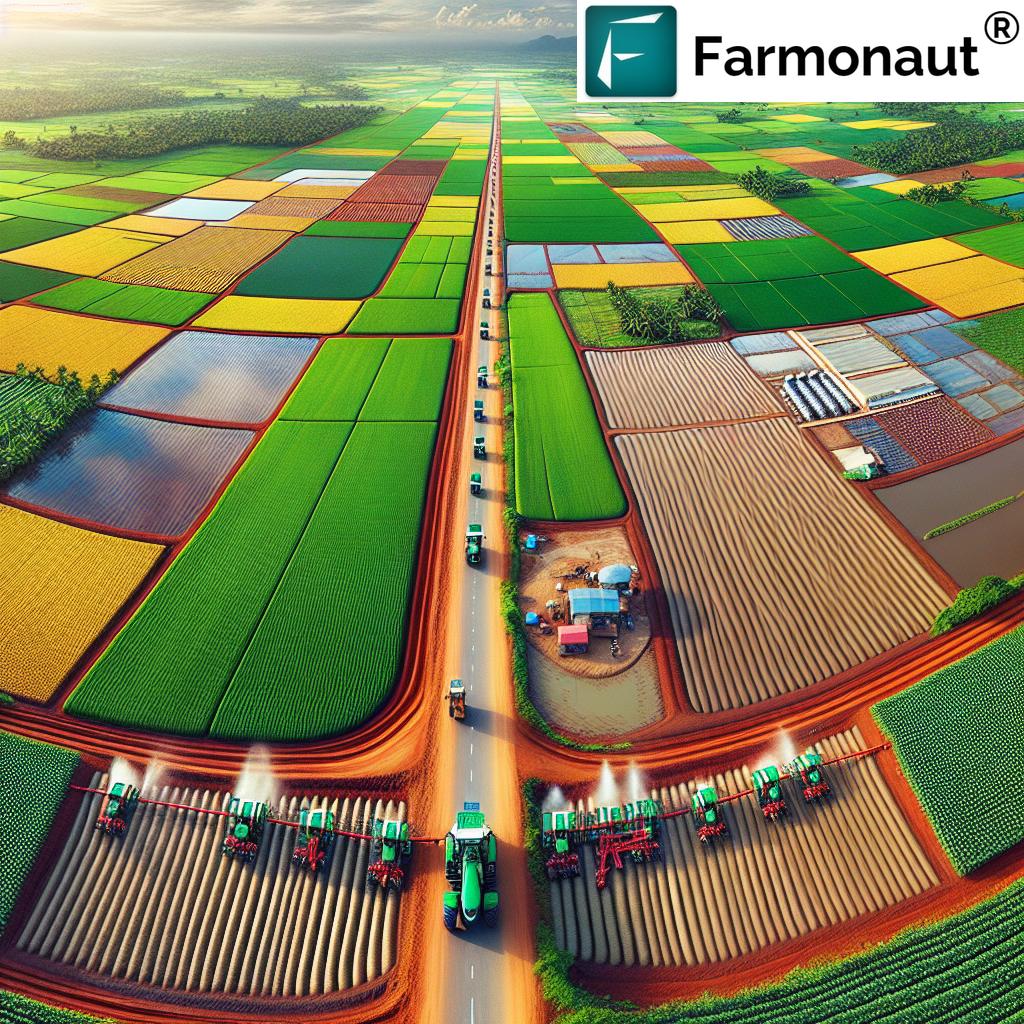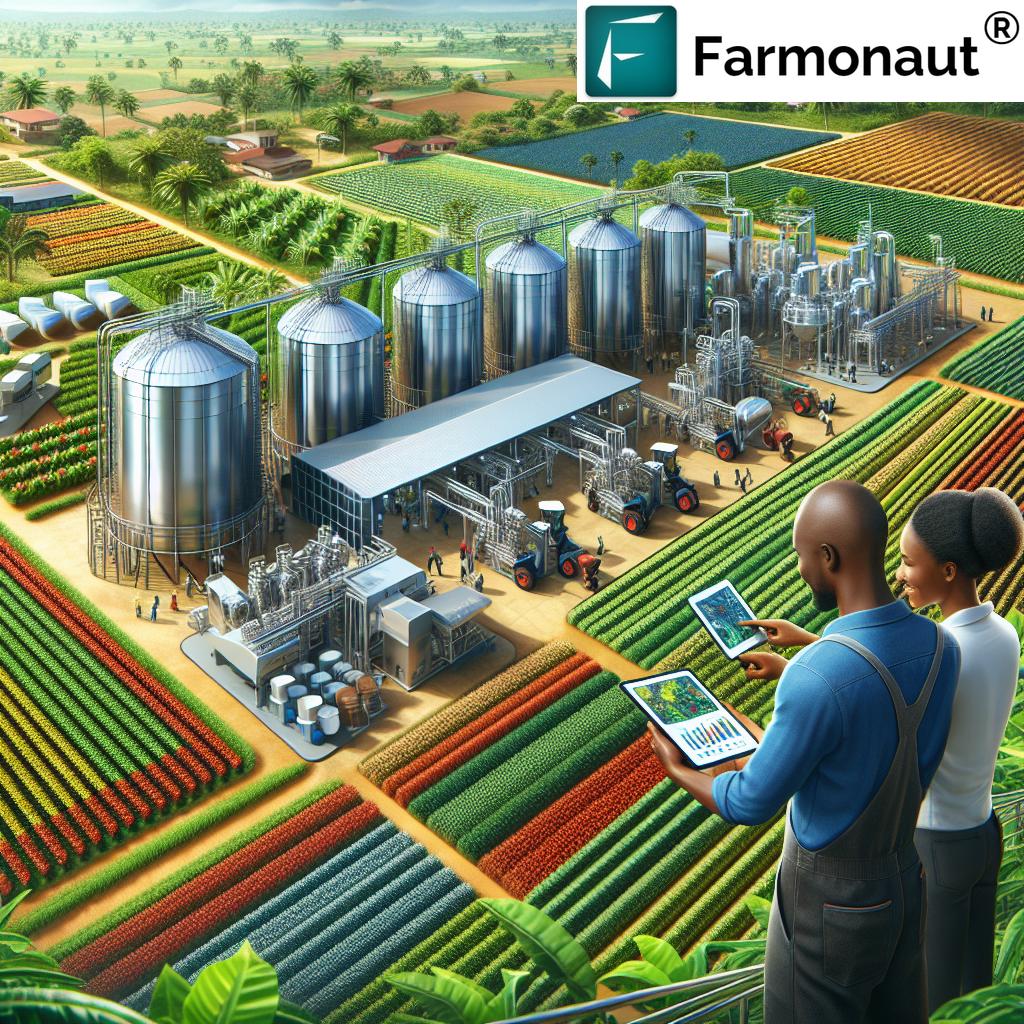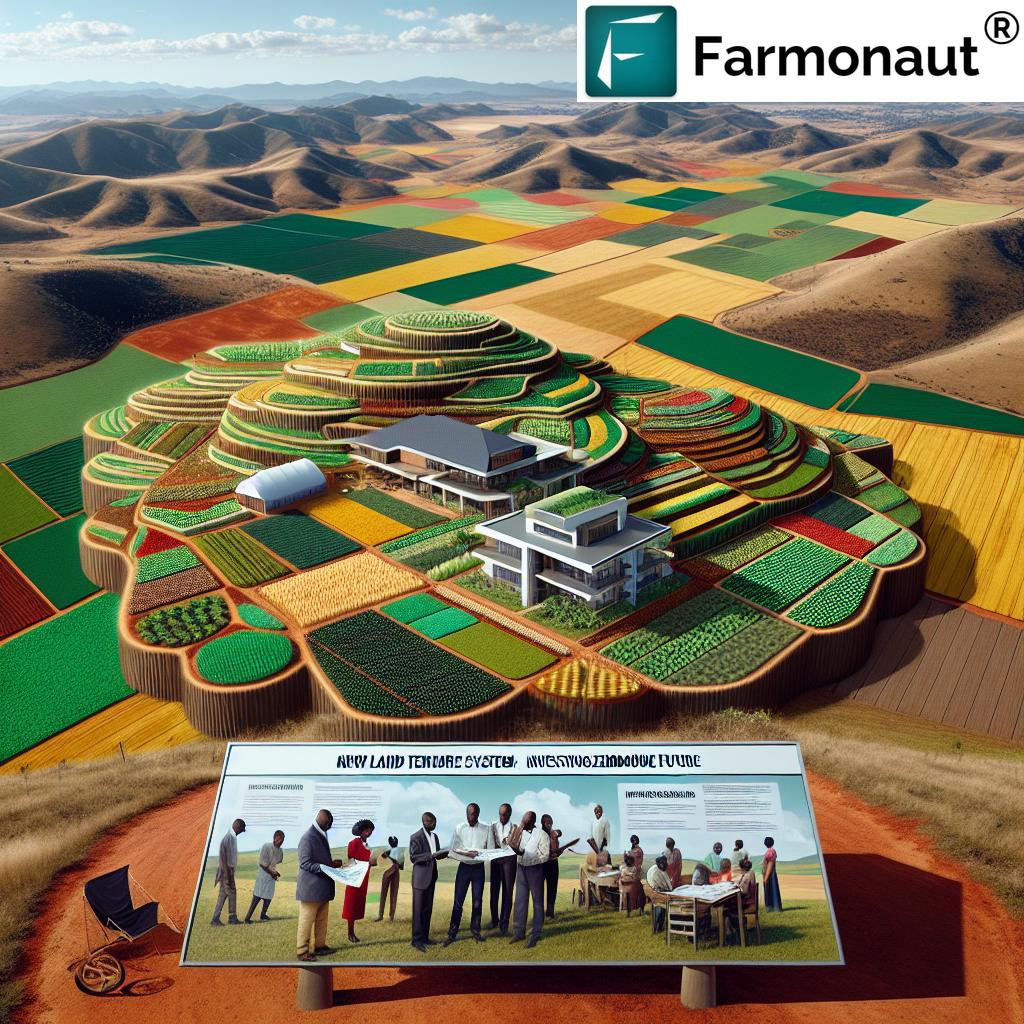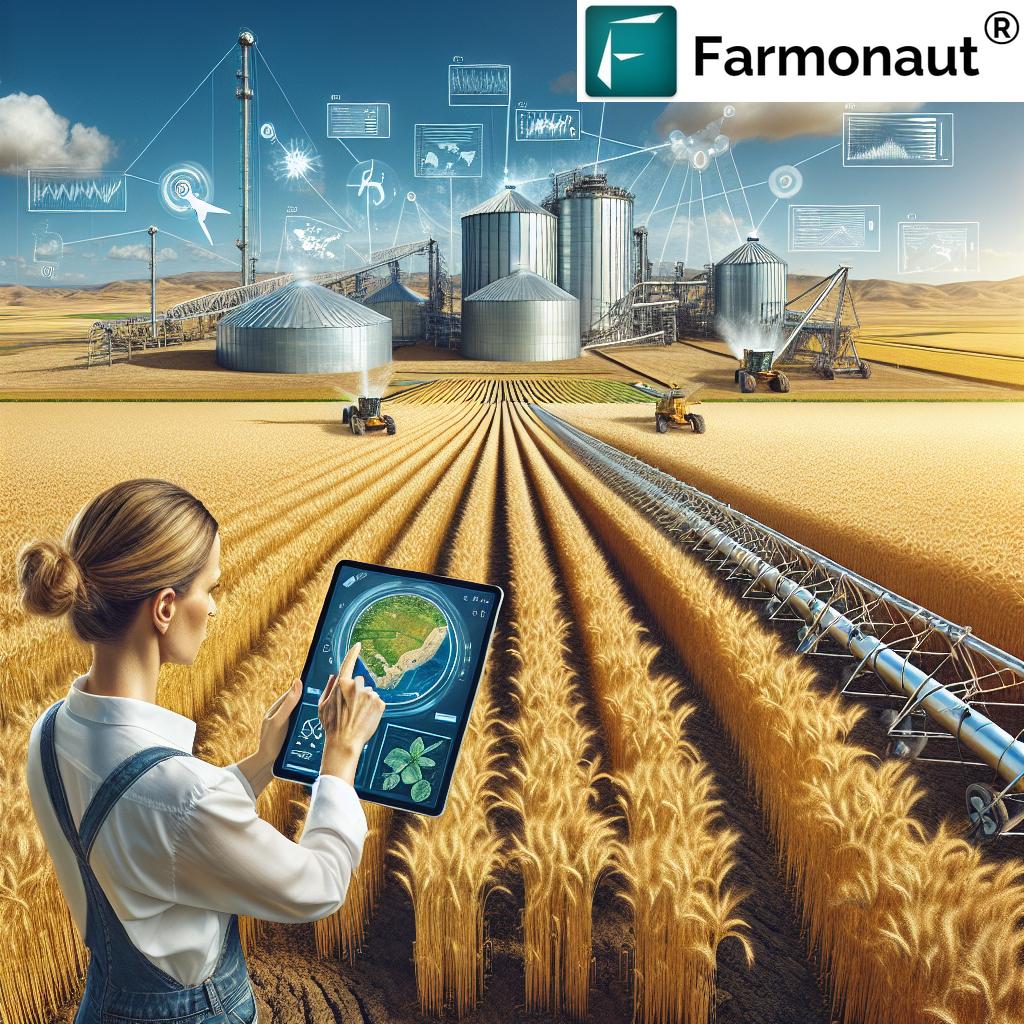Sustainable Sugar Production: How Africa’s Renewable Energy Revolution Powers Agricultural Innovation

“African sugar mills generate up to 100 MW of electricity from bagasse, powering operations and supplying national grids.”
Welcome to the sweet world of sustainable sugar production in Africa, where innovation meets agriculture to create a greener, more efficient future. In this comprehensive blog post, we’ll explore how the sugar industry is leading the charge in renewable energy utilization, transforming not just its own operations but also contributing to the broader energy landscape across the continent.
The Power of Bagasse: Turning Waste into Energy
At the heart of this renewable energy revolution lies a humble byproduct of sugar production: bagasse. This fibrous residue, left after the extraction of juice from crushed sugar cane stalks, has become a game-changer in the quest for sustainable energy solutions in agriculture.
- What is Bagasse? Bagasse is the dry, pulpy material remaining after sugar cane stalks are crushed to extract their juice.
- Energy Potential: Rich in cellulose, bagasse serves as an excellent biofuel for electricity generation.
- Sustainability Factor: Using bagasse as a renewable resource significantly reduces the carbon footprint of sugar production.
The transformation of bagasse from waste to valuable energy source exemplifies the innovative spirit driving sustainable practices in the sugar industry. By harnessing this resource, sugar mills across Africa are not only meeting their own energy needs but also contributing excess power to national grids.
Co-generation: The Heart of Sustainable Sugar Production
Co-generation, or combined heat and power (CHP), is the process at the core of this energy revolution in sugar mills. This innovative approach allows for the simultaneous production of electricity and useful heat from a single fuel source – in this case, bagasse.
- Efficient Energy Use: Co-generation captures heat that would otherwise be wasted, significantly improving overall energy efficiency.
- Reduced Dependence: By generating their own power, sugar mills decrease reliance on external energy sources.
- Environmental Impact: The process substantially lowers greenhouse gas emissions compared to traditional power generation methods.
The implementation of co-generation practices in sugar mills across Africa is a testament to the industry’s commitment to sustainability and innovation. Let’s delve deeper into how this process is transforming the sugar production landscape.
From Mill to Grid: The Journey of Bagasse-Generated Electricity
The process of turning bagasse into electricity and supplying it to national grids is a remarkable journey of resource utilization and energy efficiency. Here’s how it unfolds:
- Bagasse Collection: After sugar cane is crushed and juice extracted, the remaining fibrous bagasse is collected.
- Combustion: The bagasse is burned in high-efficiency boilers, generating steam.
- Power Generation: This steam drives turbines connected to generators, producing electricity.
- Internal Use: A portion of the generated electricity powers the sugar mill’s operations.
- Grid Supply: Excess electricity is fed into the national grid, benefiting surrounding communities.
This process not only ensures energy self-sufficiency for sugar mills but also contributes to the broader energy needs of African countries. In regions like Eswatini and South Africa, sugar mills have become significant contributors to the national power supply.
The Impact on Local Communities and National Grids
The benefits of sustainable sugar production extend far beyond the confines of the mills themselves. Let’s explore the wider impact:
- Rural Electrification: Excess power from sugar mills helps electrify nearby rural areas, improving quality of life.
- Job Creation: The maintenance and operation of co-generation plants create new employment opportunities.
- Grid Stability: Consistent power supply from sugar mills enhances the stability of national grids.
- Economic Benefits: Reduced energy costs for mills translate to more competitive sugar prices and increased exports.
In countries like Eswatini, where the Ubombo Sugar Mill operates, the impact is particularly significant. The mill not only powers its own operations but also supplies surplus electricity to the national grid, contributing to the country’s energy security.
Sustainability Beyond Electricity: Holistic Approaches in Sugar Production
While electricity co-generation is a cornerstone of sustainable sugar production, the industry’s commitment to sustainability extends to various other aspects of operations:
- Water Management: Implementing efficient irrigation systems to reduce water usage.
- Soil Conservation: Adopting practices that maintain soil health and fertility.
- Waste Reduction: Utilizing all byproducts of sugar production, minimizing waste.
- Carbon Footprint Reduction: Implementing measures to lower overall carbon emissions.
These holistic approaches ensure that sustainability is woven into every aspect of sugar production, from field to factory.
The Role of Technology in Sustainable Sugar Production
Advanced technology plays a crucial role in optimizing sustainable sugar production. From precision agriculture to efficient milling processes, technology is at the forefront of this agricultural revolution.
- Satellite Monitoring: Using satellite imagery for crop health assessment and yield prediction.
- IoT Sensors: Implementing Internet of Things devices for real-time monitoring of mill operations.
- AI and Machine Learning: Utilizing artificial intelligence for optimizing energy usage and production processes.
- Blockchain: Implementing blockchain technology for supply chain transparency and traceability.
These technological advancements not only improve efficiency but also contribute to the overall sustainability of sugar production. Companies like Farmonaut are at the forefront of providing such innovative solutions to the agricultural sector.
“Sustainable sugar production in Africa reduces carbon footprints by utilizing 100% of sugar cane byproducts for energy.”
Comparative Analysis: Traditional vs. Co-generation Sugar Mills
| Aspect | Traditional Sugar Mill | Co-generation Sugar Mill (Small) | Co-generation Sugar Mill (Medium) | Co-generation Sugar Mill (Large) |
|---|---|---|---|---|
| Energy Source | External Grid | Bagasse + Grid | Primarily Bagasse | Bagasse + Other Biomass |
| Electricity Generation Capacity (MW) | 0 | 5-10 | 20-50 | 50-100+ |
| Energy Self-Sufficiency (%) | 0% | 70-90% | 100% | 100%+ |
| Surplus Energy to Grid (MW) | 0 | 0-2 | 5-20 | 20-50+ |
| CO2 Emissions Reduction (tons/year) | 0 | 5,000-10,000 | 20,000-50,000 | 50,000-100,000+ |
| Economic Benefits ($/year) | Baseline | $500,000-$1,000,000 | $2,000,000-$5,000,000 | $5,000,000-$10,000,000+ |
This comparative analysis clearly illustrates the significant advantages of co-generation in sugar mills. From energy self-sufficiency to substantial economic benefits and environmental impact, the shift towards sustainable practices in sugar production is transforming the industry.
Case Study: Ubombo Sugar Mill in Eswatini
The Ubombo Sugar Mill in Eswatini serves as an excellent example of successful implementation of sustainable sugar production practices:
- Capacity: The mill has an installed capacity of over 40 MW for electricity generation.
- Self-Sufficiency: It meets all its own power requirements during the crushing season.
- Grid Contribution: Supplies surplus power to the national grid, enhancing energy security in Eswatini.
- Community Impact: Provides electricity to nearby residential areas and supports irrigation systems.
This case study demonstrates how a single sugar mill can have a significant positive impact on both the environment and the local community.
The Future of Sustainable Sugar Production in Africa
As we look to the future, the potential for sustainable sugar production in Africa is immense. Here are some key trends and developments to watch:
- Increased Adoption: More sugar mills across the continent are expected to adopt co-generation practices.
- Technological Advancements: Continued improvements in energy efficiency and production technologies.
- Policy Support: Governments are likely to introduce more supportive policies for renewable energy in agriculture.
- Expansion to Other Crops: The success in sugar may lead to similar practices in other agricultural sectors.
The future of sustainable sugar production in Africa is not just about producing sugar; it’s about creating a model for sustainable agriculture that can be replicated across the continent and beyond.
How Farmonaut Supports Sustainable Agriculture
In the realm of sustainable agriculture, technology plays a crucial role, and this is where Farmonaut comes into the picture. As a pioneering agricultural technology company, Farmonaut offers advanced, satellite-based farm management solutions that align perfectly with the goals of sustainable sugar production.
- Satellite-Based Crop Health Monitoring: Farmonaut’s technology allows sugar cane farmers to monitor their crops’ health in real-time, optimizing resource use and improving yields.
- AI-Driven Advisory: The Jeevn AI system provides personalized advice, helping farmers make informed decisions about irrigation, fertilizer use, and pest management.
- Resource Management Tools: Farmonaut’s platform offers tools for efficient resource management, crucial for sustainable sugar production.
- Carbon Footprint Tracking: This feature aligns with the sugar industry’s efforts to reduce environmental impact and promote sustainability.
By leveraging Farmonaut’s technology, sugar producers can enhance their sustainability efforts, improve efficiency, and contribute to the overall goal of sustainable agriculture.
The Global Impact of Africa’s Sustainable Sugar Production
The innovative approaches to sustainable sugar production in Africa have implications that extend far beyond the continent’s borders:
- Model for Other Regions: Africa’s success serves as an inspiration for sugar-producing regions worldwide.
- Climate Change Mitigation: The reduction in carbon emissions contributes to global climate change efforts.
- Technology Transfer: Innovations in African sugar production can be adapted and applied in other agricultural sectors globally.
- Economic Resilience: Sustainable practices enhance the competitiveness of African sugar in the global market.
By leading the way in sustainable sugar production, Africa is not just transforming its own agricultural landscape but is also contributing significantly to global sustainability efforts.
Challenges and Opportunities in Sustainable Sugar Production
While the progress in sustainable sugar production is impressive, it’s not without its challenges. However, each challenge presents an opportunity for further innovation and improvement:
- Challenge: High initial investment costs for co-generation equipment.
Opportunity: Development of more affordable technologies and potential for government subsidies. - Challenge: Seasonal nature of sugar cane production affecting year-round energy generation.
Opportunity: Exploration of complementary biomass sources for off-season energy production. - Challenge: Limited grid infrastructure in some regions.
Opportunity: Investments in grid expansion and modernization, potentially funded by energy sales. - Challenge: Balancing food production with energy generation.
Opportunity: Research into more efficient sugar cane varieties and cultivation methods.
Addressing these challenges will be key to fully realizing the potential of sustainable sugar production across Africa.
The Role of Policy and Government Support
Government policies and support play a crucial role in the widespread adoption and success of sustainable sugar production practices:
- Renewable Energy Incentives: Policies that encourage the use of renewable energy sources in agriculture.
- Grid Integration Support: Regulations facilitating the integration of sugar mill-generated electricity into national grids.
- Research Funding: Government support for research and development in sustainable agricultural practices.
- Tax Incentives: Financial incentives for sugar mills investing in co-generation and other sustainable technologies.
The continued development of supportive policies will be essential in driving the growth of sustainable sugar production across the continent.
Conclusion: A Sweet Future for Sustainable Agriculture
As we’ve explored throughout this blog post, sustainable sugar production in Africa is more than just an industry trend – it’s a revolution in agricultural practices with far-reaching implications. From the innovative use of bagasse for electricity generation to the implementation of holistic sustainability practices, the sugar industry is setting a powerful example for sustainable agriculture worldwide.
The benefits are clear: reduced carbon footprints, increased energy self-sufficiency, economic advantages, and positive impacts on local communities. As technology continues to advance and more sugar mills adopt these practices, the potential for growth and positive change is immense.
We at Farmonaut are proud to be part of this agricultural revolution, offering cutting-edge satellite-based solutions that support sustainable farming practices. By combining traditional agricultural knowledge with modern technology, we can create a future where agriculture not only feeds the world but also contributes to its sustainability.
The sweet success of sustainable sugar production in Africa is just the beginning. It’s a testament to what’s possible when innovation, sustainability, and agriculture come together – a model that can be adapted and replicated across various agricultural sectors and regions.
As we look to the future, it’s clear that the path to sustainable agriculture is not just desirable – it’s essential. And with continued innovation, supportive policies, and the dedication of farmers and industry leaders, that future is within our grasp.
Ready to be part of the sustainable agriculture revolution? Explore how Farmonaut can help you implement innovative practices in your operations. Try our app or check out our API for developers.
FAQs
- What is bagasse and how is it used in sustainable sugar production?
Bagasse is the fibrous residue left after extracting juice from sugar cane. In sustainable sugar production, it’s used as a biofuel to generate electricity through co-generation processes. - How does co-generation in sugar mills benefit local communities?
Co-generation allows sugar mills to produce excess electricity, which can be supplied to national grids, powering nearby communities and supporting rural electrification efforts. - What role does technology play in sustainable sugar production?
Technology, such as satellite monitoring, IoT sensors, and AI, helps optimize crop management, resource use, and production processes, enhancing overall sustainability. - How does sustainable sugar production contribute to reducing carbon footprints?
By using bagasse for energy generation and implementing efficient practices, sugar mills significantly reduce their reliance on fossil fuels, thereby lowering carbon emissions. - Can the sustainable practices in sugar production be applied to other agricultural sectors?
Yes, many of the principles and technologies used in sustainable sugar production, such as waste-to-energy conversion and precision agriculture, can be adapted for use in other agricultural sectors.













